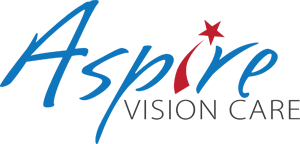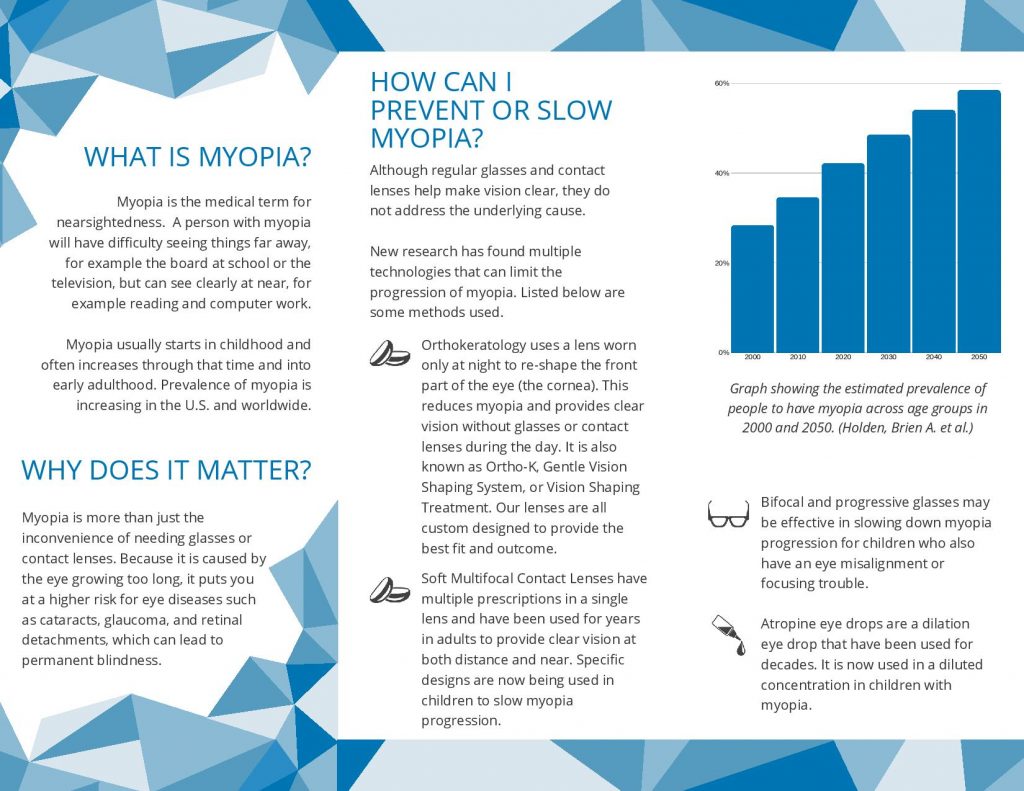What Is Myopia?
Myopia, also known as nearsightedness, is a refractive error of the eye. Myopia causes objects in the distance to be blurry, for example, seeing street signs when driving or the board at school. Near vision, however, is clear, for example reading or using the computer.
Myopia often begins during childhood, but it may also occur later in life. It often increases throughout childhood and into early adulthood.
How Common is it?
In the United States, as well as worldwide, the prevalence of myopia has increased and is expected to continue increasing. In the 1970s only 25% of Americans aged 12-54 were nearsighted , but in the 2000s this percentage jumped up to 42% for the same age group.
The graph below shows the future projections for myopia. As this number increases, researchers are developing methods to slow down the progression of myopia.
Graph showing the estimated prevalence of people estimated to have myopia across age groups in 2000 and 2050. (Holden, Brien A. et al.)
What Causes Myopia?
Myopia is caused by the eye growing too long or the cornea being too curved. Current research indicates that this elongation occurs due to a combination of genetic and environmental factors.
Anatomy and Eye Health
As the eye becomes myopic, the anatomy changes permanently. In most cases, the length of the eye grows longer. These changes increase the risk for some ocular diseases, as compared to an eye with no refractive error. This risk increases with higher amounts of myopia. The chart below reviews some of these risks.
| Prescription | Cataract | Glaucoma | Retinal Detachment |
| -1.00 to -3.00 | 2x | 4x | 4x |
| -3.00 to -6.00 | 3x | 4x | 10x |
| -6.00 or more | 5x | 4x | 16x |
How is Myopia Corrected?
Traditional treatments only provide clear distance vision. However, they do not prevent the eye from changing.
- Spectacle lenses
- Contact lenses
- Refractive surgery (example: LASIK)*
*Minimum age 18 years, though now recommended mid-20s. Requires stable glasses prescription. Some individuals may not be a candidate, especially with higher glasses prescriptions.
There are several preventative approaches to attempt to reduce the progression of myopia. Most are related to altering how light focuses in the eye. Below is a brief description of the most common methods. Some treatments are more effective than others.
- Environmental Factors
- Increased time spent outdoors in the sunlight
- Reducing visual stress (examples: frequent breaks with near work, or glasses for near work)
- Bifocal Spectacle Lenses
- Pharmacology: Low concentration atropine dilation drops
- Contact Lenses
- Multifocal (Bifocal) Contact Lenses: Specially designed contact lenses to alter focus
- Overnight Contact Lenses: Rigid lens worn overnight to reshape the eye and correct the vision. No glasses or contact lenses are needed during the day.
For more information or to schedule a Myopia Consultation please contact our office at 512-360-8969. At this consultation, we determine which treatment option(s) your child is a good candidate for and review all the options available in detail.
Additional Resources:
The following links have additional information regarding myopia and myopia management.



